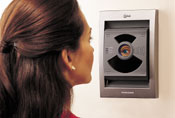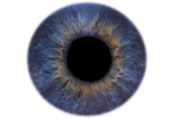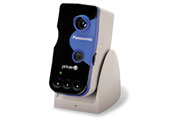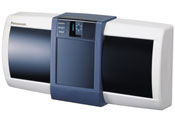Difference between revisions of "Ashwina Soekhoe"
| Line 15: | Line 15: | ||
<tr> | <tr> | ||
<td valign=top>[[Image:human_iris.jpg]]</td> | <td valign=top>[[Image:human_iris.jpg]]</td> | ||
<td> | <td>Effective identification and authentication have more and more become an issue in this era of terrorism and idividualization. Sinds no other biometric offers as much information as our eyes, the potential of eye-scan identification has been recognized for decades now. Both the iris and the retina are distinctive, and remain stable over time. Retinal scanning was first conceived in the 1970s, but the invasiveness and costs associated with imaging the retina prohibited widespread market acceptance. The concept of iris recognition was patented in 1986, and the software algorithms to realize the technology emerged in the mid nineties. Iris recognition is less invasive, less expensive, and highly accurate, which has earned the technology top billing in high-security applications and Hollywood blockbusters alike. | ||
<tr> | <tr> | ||
<td align="center"><b><i>Human Iris</i></b></td> | <td align="center"><b><i>Human Iris</i></b></td> | ||
| Line 23: | Line 23: | ||
== The Product == | == The Product == | ||
At this moment several big companies, such as Panasonic, Motorola, LG are making iris-scanners. The iris-scanners are now available on the market in different sizes and different (extra) functionalities. Some are more advanced and more sophisticated, according to the industries they are to be used in. However, the main functionality "iris scanning" is the same for every brand or type. <br> | |||
<table align="top"><tr><td> | <table align="top"><tr><td> | ||
| Line 38: | Line 38: | ||
== Future Perspectives == | == Future Perspectives == | ||
Japan is testing iris recognition in airline ticket kiosks." Future developments might lead iris recognition into shopping malls, ATMs, maybe even the local convenience store. "Eye-d?" <br> | Japan is testing iris recognition in airline ticket kiosks." Future developments might lead iris recognition into shopping malls, ATMs, maybe even the local convenience store. "Eye-d?" <br> | ||
'''References''' | |||
Revision as of 22:36, 21 March 2006
Work in progress....
Product of the future: Iris Scanner - Identification Tool
 |
| Identification through Iris Scanning |
Intoduction
The Product
At this moment several big companies, such as Panasonic, Motorola, LG are making iris-scanners. The iris-scanners are now available on the market in different sizes and different (extra) functionalities. Some are more advanced and more sophisticated, according to the industries they are to be used in. However, the main functionality "iris scanning" is the same for every brand or type.
Current Use
According to Lina Page, Director of Marketing for Iridian Technologies, "Iris-recognition success stories include restricted-access solutions in airports and nuclear power plants, and work is underway to implement the technology at border crossings and customs checkpoints. Your iris is already your passport in the Netherlands and Canada, where trusted travelers can bypass lengthy customs and immigration lines by enrolling in a fastpass program for a small fee.
It's one of the newest weapons in fighting terrorism, while helping passengers get through border control more quickly. The eye scan uses a sophisticated digital device that recognizes people by their iris - the colored part of their eye. Like fingerprints, no two irises are alike. As this border control official demonstrates, passengers put their passport through a scanner, take a brief look at a camera, and a few seconds later walk through a gate. The eye scan can track people's movements and check if they're on terrorist watch lists and police criminal databases.
Future Perspectives
Japan is testing iris recognition in airline ticket kiosks." Future developments might lead iris recognition into shopping malls, ATMs, maybe even the local convenience store. "Eye-d?"
References


